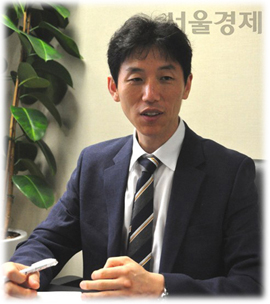| 일 | 월 | 화 | 수 | 목 | 금 | 토 |
|---|---|---|---|---|---|---|
| 1 | 2 | 3 | 4 | 5 | ||
| 6 | 7 | 8 | 9 | 10 | 11 | 12 |
| 13 | 14 | 15 | 16 | 17 | 18 | 19 |
| 20 | 21 | 22 | 23 | 24 | 25 | 26 |
| 27 | 28 | 29 | 30 | 31 |
- politics
- Value Systems
- political organization
- Regime Change
- survival process theory
- Political Regime
- the 3rd Law of politics
- mechanism of politics
- Cohesion Force
- Samjae Capacities
- power and organization
- the 2nd law
- Order of Choice
- politics and war
- Orderliness of Choice
- Canonical Politics
- Political power
- Operation of the 2nd Law
- 1st Law of politics
- Political Regimes
- political phenomena
- Mathematical Model of political science
- Political Change
- Differences in Individual Abilities and Tendencies
- Task Delegates of the Ruler: Inner Circle
- Mathematical Model of politics
- Samjae Capacity
- politics of Inner Circle
- Power
- new political science
- Today
- Total
New Political Science
Chapter 3. A. (1) Intuitive Explanation through Tables and Diagrams 본문
Chapter 3. A. (1) Intuitive Explanation through Tables and Diagrams
Political Science 2023. 12. 11. 12:30Chapter 3. Three Laws of Political Phenomenon
A. The 1st Law: Law of Samjae Capacity
(1) Intuitive Explanation through Tables and Diagrams
a. Basic Concept
In political phenomena, political actors interact with each other based on the attributes of their political capacities to form a power structure (cooperative relationship) for their individual and collective interests[Ch.0.2]. The 1st law of political phenomena is to explain the concept of power and political capacities as a means of acquiring power, which is optimized. The content is as follows.
[Ch.3.101] Political actors attain power proportional to the magnitude of their political capacity[Ch.2.9]. All political capacities are constituted by three elements: ㉠ armed capacity, ㉡ economic capacity, and ㉢ ideological capacity (Samjae capacities), and each Samjae capacity interacts with each other based on the characteristics and spatiotemporal order and structure of each capacity.
The ability to create or alter rules, which constitutes the power regime[Ch,2.7], is the core of political phenomenon and refers to the interaction between people that influences the actions of others. The size of this interactive capability is referred to as "political capacity." The subject with larger capacity can exert more force on its intentions and the subject with smaller capacity has limited influence on its intentions.
What constitutes political capacity? Political capacity as a resource of power refers to the ability to make others submissive. The first method is to use brute force or a weapon (armed capacity), the second method is to pay money (economic capacity), and the third method is to persuade others through speech or writing (ideological capacity). Other methods are a combination of these methods.

Consider the PKB case[Ch.0.B.2]. P is assumed to be a person with a gun and strong physical power, K is assumed to be a person with a lot of money, and B is assumed to be a person with abundant learning and prestige. People will immediately and primarily follow the words of P, who shows power, but if they are just a little distant from P or if time continues, they will not follow the words of P. On the other hand, the words of K, who buys people with money, will have a wider and longer-lasting influence in people. On the other hand, the words of B, who has prestige, will not have an immediate effect on others, but instead will have a lasting effect, even after B dies.
The 1st law is to generalize these differences in power phenomenon based on people's capabilities in political phenomenon.
'Mechanism of Politics' 카테고리의 다른 글
| a. ㉡ Schematic Understanding of The 1st Law (0) | 2023.12.11 |
|---|---|
| a. ㉠ Detailed Contents of The 1st Law (0) | 2023.12.11 |
| b. Utilization of Level Multiplicity (0) | 2023.12.11 |
| (3) Level Multiplicity of Scale & Layer (0) | 2023.12.11 |
| b. Contents of the Order of Choice (0) | 2023.12.11 |




